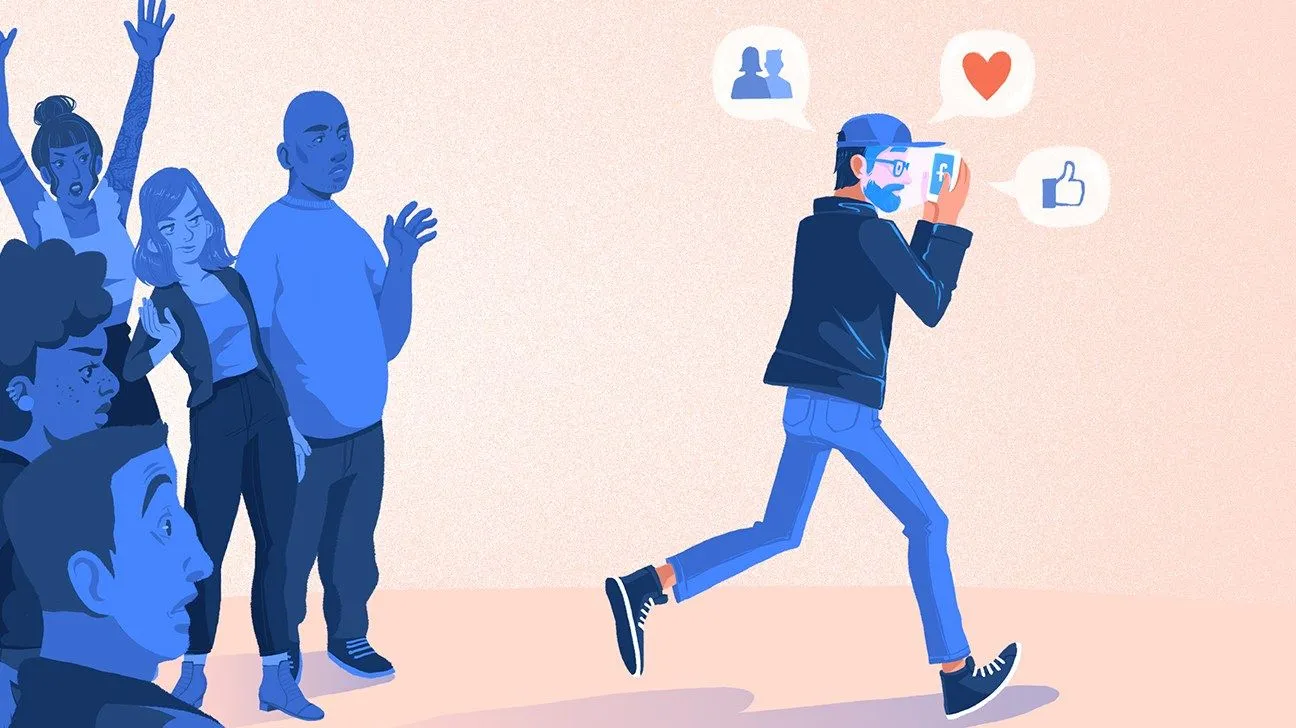How much do we hang out on social media? In an ever-evolving digital world, social media continues to play a central role in shaping our online experiences and influencing our offline lives. When we examine the trends and impacts of social media in 2024, it is clear that its reach and influence spans across continents, impacting individuals and societies in multiple ways.
How much do we hang out on social media? Average daily usage decreased from 151 minutes to 143 minutes
Recent data paints a nuanced picture of social media use around the world. While average daily usage has declined slightly from 151 minutes to 143 minutes per day, there are notable differences between different regions. Brazil leads the way with users spending nearly four hours a day on social platforms, while the US lags behind with just over two hours.1
Why do users flock to social media platforms? The reasons are as varied as the users themselves. From seeking entertainment to sharing content with friends and keeping up to date with current events, social media serves a variety of purposes, reflecting its dynamic nature in meeting user needs.
You may be interested: Brain-computer interfaces: A turning point in the lives of people with disabilities?
Among the myriad benefits and drawbacks of social media, a pressing concern that needs attention is internet addiction. As individuals spend more and more time on social platforms, the risk of overuse leading to addiction is becoming more palpable. Research shows that prolonged and uncontrolled engagement with social media can lead to addictive behaviors, affecting mental health and overall well-being.

Internet addiction: The danger of the digital age
Internet addiction can be generally defined as excessive use of the Internet, inability to prevent cravings, loss of importance of time spent without being connected to the Internet, excessive irritability and aggression when deprived, and gradual deterioration of the person’s work, social and family life. While defining Internet use behavior at the problem level, different researchers have used other terms based on different causalities. These include “internet addiction”, “pathological internet use”, “problematic internet use”, “excessive internet use”, “compulsive internet use” and even “intertomania”.
For many people, the concept of addiction classically includes the use of chemical or synthetic substances such as alcohol, cannabis, cocaine, heroin, but there are also behavioral addictions that are not chemical in origin, such as gambling, shopping, watching television, playing computer games. Behavioral addictions, like alcohol and drug addictions, exhibit physical and psychological symptoms of addiction (mental preoccupation, mood lability, tolerance, withdrawal, interpersonal conflict and relapse), which are the main components of addiction.2
According to the latest data, the Internet is used by more than four billion people worldwide. This number has exceeded 47 million in Turkey. And the use of the internet is rapidly spreading, especially among young people. The age of first use of the internet is gradually decreasing and it causes addiction especially in adolescence. The existence of studies that have found that playing online games on the internet causes dopamine secretion and that this is an important neurochemical event that is effective in the development of addiction is thought to support researchers who address problematic internet use using the concept of internet addiction. Online games that can be played on the internet and meeting new people can use biological reward systems like psychoactive substances, causing the person to reinforce these behaviors by repeating them and as a result, addiction may occur.
Internet addiction and adolescents
Excessive computer and internet use affects the psychological development processes of the person and has negative effects on social functionality. Excessive use of the internet, which is quite common especially in school-age youth, negatively affects social relations and makes the person dependent.
According to Erikson’s theory of psychosocial development, the period between the ages of 12-18 is a critical period of role confusion against gaining identity. In this period when adolescents begin to question their own identity and experience very important changes, peer groups come to the forefront rather than the family, and anti-social behaviors may be observed accordingly.
While peer acceptance and social approval come to the fore in adolescence, the internet offers adolescents the opportunity to meet these expectations through communication applications such as electronic mail, instant messaging, journaling and chat rooms. Adolescents can easily gain approval and acceptance in their online communication. It has been determined that getting satisfaction from communication via the internet increases the susceptibility to internet addiction.
You may be interested: Are our brains getting bigger? Or are they shrinking?
Adolescents who have difficulty in the process of identity acquisition may see the internet as a medium that helps them escape from their real life responsibilities and real identities. Some studies show that adolescents exhibit unhealthy/problematic internet use behavior as a coping strategy for low self-esteem and other sleep problems.
The fact that people can establish social bonds on the internet that they cannot establish in real life, communicate with other people without taking risks, express their thoughts and feelings freely, hide their real identities, and communicate whenever they want can be counted among the factors that make the internet attractive.
The frequency of use, purposes of use, incomplete identity development and lack of psychological maturity make adolescents one of the most important risk groups for internet addiction.

What to do with technology addiction?
- Encourage your children to meet their friends naturally and socialize them in peer groups.
- Direct your children to sports branches appropriate to their talents and interests.
- Support your child’s friendships, plan activities that bring them together.
- Check your child’s computer use and get to know their online friends.
- Make sure you have secure internet applications on your computers.
What should not be done?
- Never use smartphones/tablets etc. to console or silence children.
- Do not allow children to use the internet uncontrolled and for long periods of time.
- Do not serve the child at the computer at mealtimes and teatimes, let them join you.
- Don’t set up a home centered around technological devices such as TV or internet.
Treatment approaches
Studies have suggested that some negative components play a role in internet addiction, just like in depression, and that internet addiction emerges as a behavioral pattern to compensate for areas of failure in life, and in this context, excessive use of the internet can be seen as a rewarding behavior and can be used as an inadequate strategy to combat some negative emotions (fear, restlessness, frustration) through learning mechanisms. Considering all these cognitive features of Internet addiction, it is clear that cognitive behavioral techniques will have an important place in the treatment of this disorder. From this point of view, cognitive behavioral methods are used in the treatment of Internet addiction in addition to pharmacotherapy or independently of pharmacotherapy.3
Recommended steps in cognitive behavioral therapy
- Determining whether the person can stay away from the internet, relocating the computer and transferring it to where other people are located
- Prepare weekly internet usage schedules and ensure compliance
- Changing the time to connect to the Internet
- Create an internet notebook
- Not hiding from friends and relatives that they have problems with the internet
- Participation in sports activities
- Granting internet vacations
- Handling automatic thoughts
- Relaxation exercises
- Noting what is felt while connecting to the internet
- Acquiring new social skills
References
- Average daily time spent on social media worldwide 2012-2024. (2024, April 10). Statista. https://www.statista.com/statistics/433871/daily-social-media-usage-worldwide/ ↩︎
- Teknoloji Bağımlılığı. (n.d.). https://www.yesilay.org.tr/tr/. https://www.yesilay.org.tr/tr/bagimlilik/teknoloji-bagimliligi ↩︎
- Alpaslan, D. D. A. H. (2021, April 6). İnternet Bağımlılığı Ergenler Ve Tedavi Yaklaşımları | Doç. Dr. Ahmet H. Alpaslan | Bursa Çocuk Ve Ergen. Doç. Dr. Ahmet H. Alpaslan | Bursa Çocuk Ve Ergen Psikiyatrisi. https://www.cocukpsikiyatrisi.com/internet-bagimliligi/ ↩︎




Leave a Reply